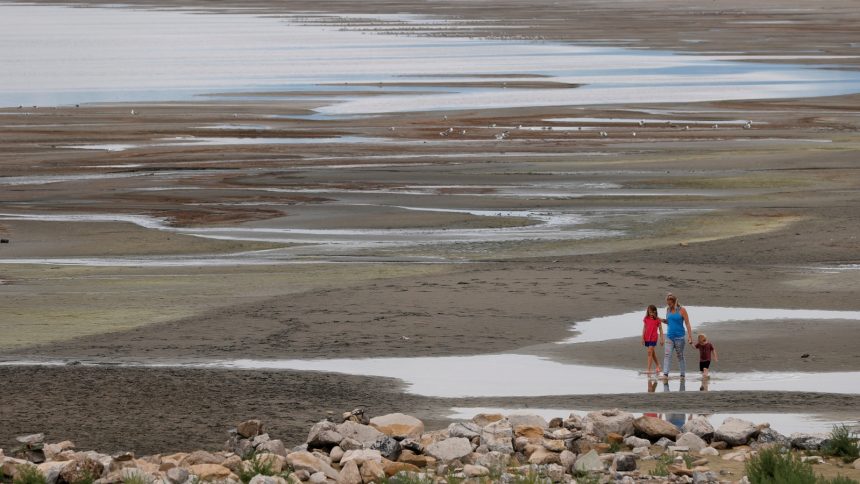This story was first shared by Capital and Main. While driving on Interstate 215 south of Salt Lake City, I noticed bumper stickers on the pickup truck ahead. One displayed a rattlesnake with the motto “Don’t tread on me,” often associated with right-wing ideology. The other featured a shrinking lake map with the words “Keep the Salt Lake Great,” from a local environmental group. This juxtaposition reflects Utah’s conservative values and the environmental challenges it faces due to climate change. Despite denying climate science in the past, Utah has experienced rising temperatures, worsening droughts, and other extreme weather events in recent decades. The impact on public health and natural wonders like the Great Salt Lake has prompted residents to acknowledge climate change as a serious issue. A historic compact formed in 2020 brought together political and business leaders in Utah to advocate for clean energy and climate action. This bipartisan concern has influenced the Senate race to replace Mitt Romney, with candidates emphasizing the importance of addressing climate change. However, there are doubts about some candidates’ commitment to real solutions rather than industry-friendly approaches. The disconnect between public support for climate action and political decisions reflects the influence of fossil fuel interests in Utah. Despite growing awareness and public pressure, significant policy changes to combat climate change have yet to materialize in the state. Younger voters are particularly vocal about the need for action, as they stand to inherit the consequences of inaction. Candidates like mountaineer Caroline Gleich are pushing for meaningful policy changes to mitigate the effects of climate change in Utah. The future of Utah’s environment and public health rests on the decisions made in this critical election.






